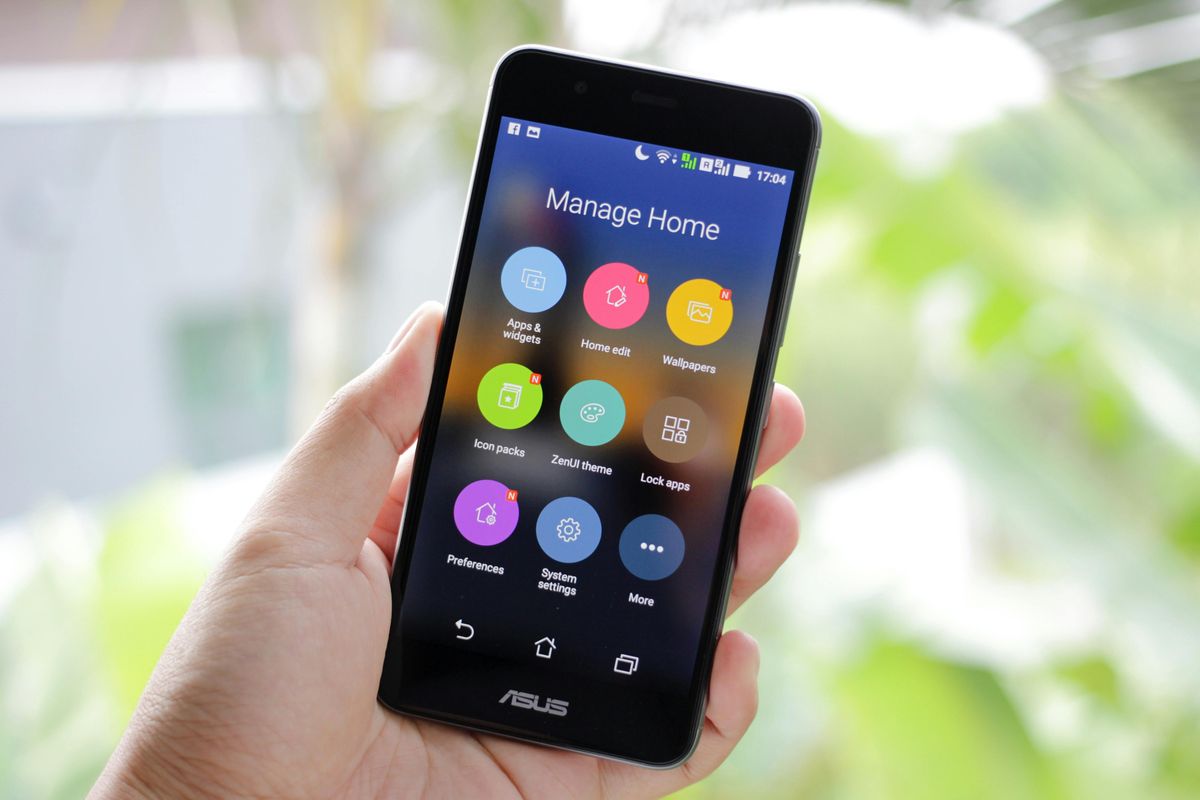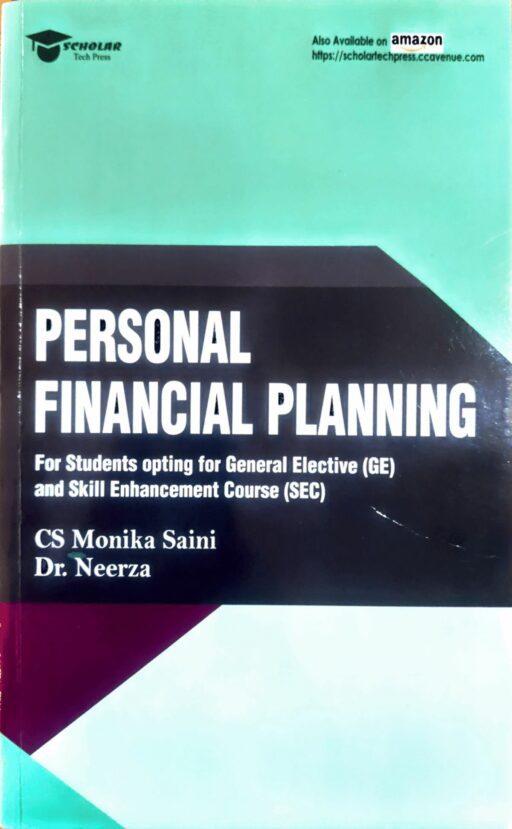In a world where financial stability is key, understanding and managing your personal finances is crucial. ‘Maximizing Your Budget with Mint: Personal Finance Made Simple’ is an insightful guide designed to help you take control of your money. By leveraging the features of Mint, you can gain a comprehensive view of your financial health, create a budget that works for you, and set yourself up for long-term savings. This article will also compare Mint with other budgeting tools, explore advanced budgeting techniques, and prepare you for the future of personal finance management.
Key Takeaways
- Mint provides a user-friendly platform for tracking your finances and creating a budget that aligns with your financial goals.
- Understanding the psychological barriers to financial awareness is a crucial step towards taking control of your money.
- Comparing Mint to other budgeting tools like YNAB and Goodbudget can help you determine the best app for your needs.
- Advanced budgeting techniques, such as zero-based budgeting, can enhance your savings and financial forecasting.
- With Mint’s departure, it’s important to know how to transition to new budgeting tools and adapt your financial habits accordingly.
Understanding Your Financial Health: Beyond Denial


Recognizing the True State of Your Finances
Acknowledging the reality of your financial situation is the first critical step towards taking control. It’s often easier to live in denial than to face the truth that you might be living beyond your means. The signs of financial distress can be subtle and easily overlooked when masked by a seemingly comfortable lifestyle.
To truly understand your financial health, start by laying out all your monthly expenses. This exercise can be eye-opening and is essential for creating a realistic budget.
Here’s a simple way to categorize your expenses:
- Housing: Rent or mortgage, property taxes, home insurance
- Utilities: Electricity, water, gas, internet
- Transportation: Car payments, fuel, public transit
- Food: Groceries, dining out
- Personal: Clothing, entertainment, gym memberships
- Debt: Credit card payments, student loans
- Savings: Emergency fund, retirement accounts
By comparing these expenses against your income, you can identify areas where you may be overspending. Remember, using tools like Mint can help you track these expenses more efficiently, offering a user-friendly platform to manage your finances.
The Psychological Barriers to Financial Awareness
Understanding the psychological barriers to financial awareness is crucial in taking the first steps towards fiscal responsibility. Many individuals struggle with acknowledging their true financial state due to a variety of mental blocks. These can range from the fear of facing reality to the misconception that maintaining appearances is more important than actual financial stability.
- Denial: Just like physical health, it’s easier to be in denial about finances because money troubles can be hidden behind a facade of wealth.
- Comparison: Judging your own success by others’ perceived wealth can lead to a distorted view of financial health.
- Education: A lack of basic personal finance knowledge can prevent understanding and action.
It’s essential to recognize that personal finance is as much about behavior as it is about knowledge. The journey to financial literacy begins with the decision to no longer ignore the signs of monetary distress and to educate oneself on the principles of sound money management.
Turning the Corner: Steps to Acceptance and Action
Once you’ve recognized the true state of your finances and overcome psychological barriers, it’s time to take decisive steps towards financial health. The journey to acceptance and action involves a series of practical measures that can set you on the path to a more secure financial future.
- Take Inventory of your financial situation, including all debts, assets, and income streams. This is the foundation upon which you will build your budget.
- Set Clear Goals for what you want to achieve, such as paying off debt, saving for an emergency fund, or planning for retirement.
- Create a Budget that aligns with your goals and helps you track your spending. Mint can assist in categorizing your expenses and setting limits.
- Focus on Debt Reduction by employing strategies like the debt snowball method, where you pay off smaller debts first to build momentum.
- Automate Savings to ensure you consistently set aside money for your goals without having to think about it each month.
Embracing these steps is not just about altering numbers in a budget; it’s about changing your mindset and habits to create a sustainable financial lifestyle.
Crafting Your Budget with Mint: A Step-by-Step Guide


Setting Up Your Mint Account
Once you’ve decided to take control of your financial life, setting up your Mint account is the first step towards a clearer financial picture. Mint’s platform allows you to manage all accounts in one place, providing a comprehensive view of your finances. Here’s how to get started:
- Sign up for a free Mint account using your email address.
- Connect your financial accounts, including bank accounts, credit cards, and investments.
- Customize your account settings to match your personal financial goals.
Mint’s intuitive interface simplifies the process of tracking your wealth and spending, making it easier to make informed decisions.
Remember, the goal is not just to track finances but to gain insights that lead to better money management. As you connect your accounts and start to see your spending habits, you’ll be equipped to make smarter choices and set realistic budgets.
Creating a Personalized Budget Plan
Creating a personalized budget plan with Mint begins with understanding your income and expenses. Start by entering your regular income sources, such as your salary, freelance income, or any other earnings. Next, list out your fixed expenses, including rent or mortgage, utilities, and insurance premiums.
For variable expenses like groceries, dining out, and entertainment, Mint’s categorization system can help you track and adjust your spending as needed. Here’s a simple breakdown of how to categorize your expenses in Mint:
- Fixed Expenses: Mortgage/Rent, Utilities, Insurance
- Variable Expenses: Groceries, Dining Out, Entertainment
- Savings & Investments: Emergency Fund, Retirement Accounts
Remember, the goal is to ensure that your income covers all your expenses and leaves room for savings. > Mint’s flexibility allows you to adjust your budget categories as your financial situation changes, ensuring that every dollar is working for you.
Comparing Mint to other financial planning apps, you’ll find that each has its unique approach. While Mint provides a comprehensive overview of your finances, other apps like You Need a Budget (YNAB) and Goodbudget may offer specialized features such as zero-based budgeting or the envelope system. It’s essential to choose a tool that aligns with your financial goals and habits.
Automating Expense Tracking and Categorization
With Mint, the tedium of manually tracking every expense is a thing of the past. The app’s ability to link to your accounts and categorize expenses automatically simplifies the budgeting process immensely. By analyzing your credit card and bank statements, Mint can gauge your average spending across various categories.
Mint’s automation features are designed to help you stay on top of your financial game without the hassle of inputting each transaction. This not only saves time but also provides a more accurate picture of your spending habits.
Here’s a quick look at how Mint compares to other tools in terms of expense categorization and account linking:
| Feature | Mint | Rocket Money | Empower | Goodbudget |
|---|---|---|---|---|
| Categorizes Expenses | Yes | Yes | Yes | Customizable |
| Links to Accounts | Yes | Yes | Yes | No |
| Availability | Multi-platform | Multi-platform | Multi-platform | Multi-platform |
| Security Features | Standard | Encrypted data, audits | Bank grade encryption | – |
Remember to review and adjust categories as needed to reflect your actual spending. This ensures that your budget plan remains tailored to your personal financial goals.
Comparing Mint to Other Budgeting Tools


Pros and Cons of Popular Budgeting Apps
When exploring alternatives to Mint, it’s crucial to weigh the advantages and disadvantages of each option. Budgeting apps vary widely in their features, usability, and cost, making it important to choose one that aligns with your financial goals and habits.
- Credit Karma offers comprehensive credit monitoring alongside budgeting tools, but may not be as focused on budgeting as standalone apps.
- Rocket Money is user-friendly and affordable, yet its free version is limited and lacks debt payoff planning.
- YNAB (You Need A Budget) emphasizes zero-based budgeting, which can be powerful but also requires a more hands-on approach.
- Empower provides a modern interface and personalized insights, but may come with a higher price tag.
- Goodbudget uses the envelope system, ideal for visual spenders, but it might not suit those who prefer digital transactions.
Choosing the right budgeting app is a balance between functionality and personal financial management style. While some apps excel in providing detailed analytics, others offer simplicity and ease of use. It’s essential to identify your priorities and select an app that supports your financial journey.
Why You Might Choose YNAB Over Mint
When considering a budgeting tool that focuses on proactive financial planning, You Need A Budget (YNAB) stands out. Unlike Mint, which primarily tracks where your money has gone, YNAB employs a zero-based budgeting system, compelling users to assign every dollar a purpose in advance. This approach can be particularly beneficial for those who want to take control of their future spending rather than just monitoring past transactions.
YNAB’s methodology is designed to help users save more by giving every dollar a job, whether it’s for bills, savings, or investments.
YNAB also boasts impressive potential savings, with the average user reportedly saving $600 in the first two months and up to $6,000 in the first year. While YNAB is a paid service, the investment may be justified by the significant financial benefits users experience.
Here’s a quick comparison of YNAB’s cost and features:
| Feature | YNAB | Mint |
|---|---|---|
| Cost | $99/year or $14.99/month | Free |
| Free Trial | 34 days | N/A |
| Budgeting System | Zero-based | Traditional |
| Average Savings | $6,000 in first year | Varies |
Choosing YNAB over Mint could be a strategic move for those who prefer a more hands-on and forward-looking approach to budgeting.
Goodbudget and the Envelope System: Is It Right for You?
Goodbudget takes a traditional approach to budgeting with its digital version of the envelope system. It’s designed for those who prefer a hands-on method, manually allocating funds to various spending categories. This can foster a heightened sense of awareness regarding your spending habits.
Goodbudget’s free version offers a limited number of envelopes, which might suffice for individuals or small households. However, for those requiring more granularity and historical data, the paid version expands the service significantly.
Here’s a quick comparison of what Goodbudget offers:
| Feature | Free Version | Paid Version |
|---|---|---|
| Envelopes | 20 total | Unlimited |
| Historical Data | Limited | Up to 7 years |
| Cost | Free | $8/month or $70/year |
If you’re contemplating whether Goodbudget is the right tool for you, consider your willingness to manually enter transactions and your need for a structured budgeting framework. The envelope system may not be ideal for everyone, especially if you prefer automated tracking or a more flexible budgeting approach.
Advanced Budgeting Techniques for Long-Term Savings


Zero-Based Budgeting with YNAB
Zero-based budgeting (ZBB) is a method where every dollar you earn is allocated a specific role, leaving no money without a designated purpose. YNAB (You Need A Budget) champions this approach, ensuring that each dollar is assigned to expenses, savings, or investments. This proactive budgeting style can be particularly effective for those who want to gain a tighter grip on their finances.
With YNAB’s zero-based budgeting system, users often find themselves more engaged with their financial planning, as it requires regular updating and reassessment of financial priorities.
Here’s a quick overview of YNAB’s offering:
- Cost: 34-day free trial, then $99 per year or $14.99 per month
- Standout Features: Assigns every dollar a job, promoting accountability and preventing frivolous spending
- Potential Savings: YNAB claims users can save $600 in the first two months and $6,000 in the first year
While the zero-based budgeting system may not be suitable for everyone, those who are looking for a detailed and hands-on budgeting tool will find YNAB’s methodology compelling. It’s worth noting that college students can benefit from a 12-month free subscription, providing proof of enrollment.
Maximizing Savings with Expert Money Tips
To truly maximize your savings, it’s essential to adopt strategies that have been tried and tested by financial experts. One fundamental tip is to prioritize your savings by treating it as a non-negotiable expense in your budget. This mindset shift ensures that you consistently allocate funds to your savings, much like you would for rent or utilities.
Proactive savings is not just about setting money aside; it’s about making your money work for you. Embracing the power of compound interest can significantly boost your savings over time without requiring extra effort.
Here are some expert tips to help you save more effectively:
- Utilize the 50/30/20 budget rule to balance your finances into needs, wants, and savings.
- Open a high-yield savings account to take advantage of better interest rates.
- Automate your savings to ensure a portion of your income is saved before you have a chance to spend it.
- Review and adjust your budget regularly to identify areas where you can cut back and increase your savings rate.
Remember, even small steps can lead to big changes in your financial health. Start with what you can manage and build from there.
Leveraging Tools for Financial Forecasting and Visualization
In the realm of personal finance, the ability to forecast and visualize your financial future is a game-changer. Tools that offer these capabilities can transform the way you approach your budget and savings goals. They allow you to see the potential outcomes of your financial decisions, making it easier to plan for long-term success.
- Tiller Money integrates with Google Sheets and Excel, providing a high degree of customization and control.
- Cushion offers a free trial to dig deeper into your finances, with a focus on analyzing trends.
Embracing tools that automate and enhance financial planning can lead to life-changing financial clarity. With the right setup, you can keep a clear view of all your money in one place.
While Mint has been a popular choice, alternatives like Tiller and Cushion are gaining traction. They offer unique features such as spreadsheet-based tracking and automated data aggregation, which can be particularly appealing for those who seek more flexibility and privacy in their financial management.
Preparing for a Post-Mint World: Transitioning to New Tools


What to Look for in a Mint Alternative
As Mint’s era comes to a close, finding a suitable alternative requires careful consideration. Look for a tool that aligns with your financial management style and offers the features you’ve come to rely on. A good starting point is to compare the core functionalities you need against what’s available in the market.
When evaluating alternatives, consider the following aspects:
- Ease of use: The interface should be intuitive and user-friendly.
- Security: Strong security measures are essential to protect your financial data.
- Cost: Determine if the service is free or if there’s a subscription fee, and whether it’s worth the investment.
- Customer support: Access to reliable customer support can be crucial when dealing with financial data.
- Flexibility: The ability to customize and adapt the tool to your changing financial needs.
While no service will be a perfect match, the goal is to find an alternative that offers a balance of functionality, security, and affordability.
Remember, the transition to a new tool is not just about replicating Mint’s features but also about embracing new functionalities that could enhance your financial management. For instance, Tiller offers a unique combination of automated data aggregation with the flexibility of spreadsheet customization, which might be a significant upgrade for some users.
How to Migrate Your Financial Data Safely
Migrating your financial data from Mint to a new platform can be a seamless process if done correctly. Ensure that you export all your data from Mint, including transactions, categories, and budgets. Here’s a simple guide to help you transition safely:
- Step 1: Export your Mint data to a CSV file. This can usually be done from the settings or tools section of the app.
- Step 2: Choose a new budgeting tool that meets your needs, such as Tiller or Credit Karma.
- Step 3: Import the CSV file into your new budgeting tool. Many platforms offer guides or tools to facilitate this process.
- Step 4: Verify that all data has been transferred accurately. Check for any discrepancies in transactions or categories.
- Step 5: Begin using your new tool, and make any necessary adjustments to your budgeting categories or rules.
It’s essential to back up your data periodically, even after migrating to a new tool. This ensures that you have a secure copy of your financial history, which can be invaluable for future reference or in case of data loss.
Remember, while the process may seem daunting, many users have successfully migrated their data with minimal hassle. Support teams and online communities are valuable resources if you encounter any difficulties during the transition.
Embracing Change: Adapting to New Budgeting Habits
Adapting to new budgeting habits can be a transformative experience, offering a fresh perspective on managing your finances. Embrace the change as an opportunity for growth, and consider it a step towards a more secure financial future. Transitioning to a new tool requires patience and a willingness to learn, but the rewards are well worth the effort.
- Evaluate your financial goals and align them with the features of the new tool.
- Take the time to familiarize yourself with the interface and functionalities.
- Import your financial data carefully to ensure accuracy and completeness.
- Commit to regular check-ins with your budget to maintain financial discipline.
Remember, the goal is not just to replace Mint, but to enhance your financial management skills and adapt to a system that supports your current and future financial needs.
As you move forward, keep in mind the broader picture of your financial journey. It’s not just about tracking expenses, but also about setting and achieving long-term goals. The right tool can serve as a guide to personal finance, covering budgeting, debt management, wealth growth, and major milestones, providing a roadmap for financial stability and growth.
Conclusion
As we navigate the ever-changing landscape of personal finance, tools like Mint have made budgeting and tracking expenses more accessible. However, with Mint’s departure, it’s crucial to find a suitable alternative that aligns with your financial goals. Whether you opt for a free service like Goodbudget or invest in a subscription-based app like YNAB or Tiller, the key is to choose a platform that offers the features you need to maintain control over your finances. Remember, the best budgeting tool is the one that you will consistently use and that provides clear insights into your financial health. Embrace the change and take this opportunity to reassess your budgeting strategies, ensuring you’re on the path to financial empowerment and success.
Frequently Asked Questions
What makes Mint a good choice for budgeting?
Mint is a popular budgeting tool because it automatically tracks and categorizes your expenses, making it easier to see where your money is going and to stay on top of your financial health.
How does YNAB compare to Mint?
YNAB (You Need A Budget) uses a zero-based budgeting system which assigns every dollar a job, focusing on future spending rather than tracking past expenses. It’s a paid service, but it claims to help users save a significant amount of money.
Can Goodbudget be a suitable Mint alternative?
Goodbudget might be a good alternative for those who prefer the envelope budgeting method. It’s a free tool that allows you to allocate specific amounts to different categories, but unlike Mint, it requires manual transaction entries.
Are there any other notable Mint alternatives?
Yes, there are several alternatives like Tiller, which offers financial forecasting and a visual approach to budgeting, and PocketSmith, known for its personal financial management capabilities.
What should I do to prepare for Mint’s discontinuation?
To prepare for Mint’s discontinuation, research and select a budgeting app that suits your needs, ensure it has the features you require, and migrate your financial data safely to the new platform.
What are the benefits of automating my finances?
Automating your finances can help you save time, reduce the risk of errors, and ensure that bills are paid on time. It can also help you maintain a consistent saving strategy and avoid late fees.





